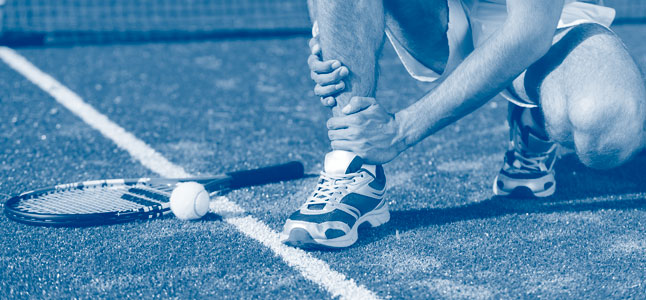What is your involvement with tennis?
I have been lucky enough to be involved with Tennis Australia as a tournament physiotherapist over the past 12 months. Tournament coverage can involve working with junior, pro-level and wheelchair tennis players. Just recently, in December 2015, I was part of the physiotherapy team at the December Showdown at Melbourne Park. The Showdown is a large 16-day tournament that encompasses the Australian Junior Championships, State Teams Events and the Australian Open Wildcard playoff.
What are the most common injuries treated?
The injuries which present to the physio room during a tournament can be highly variable.
Low Back Pain
Back pain, particularly in the lumber region, is a common injury in tennis. Large rotational and compressive forces go through the spine during serving and when hitting forehand and backhand. Tennis involves a large amount of repetition with players having daily practice, playing doubles and singles matches often on the same day, and playing back to back tournaments. This repetition often plays a role in the presentation of back pain.
Shoulder, Elbow and Wrist
Shoulder overuse injuries are also frequent, along with elbow and wrist pain. Tennis requires sound rotational flexibility and/or stability at the shoulder when hitting, and players lacking this control may be at risk rotator cuff and tendon injuries. An injury quite specific to tennis, though definitely not as common, is a humeral stress response. This injury occurs in the upper arm, near the bicep region, and is usually found in young players who are playing large volumes of tennis during a period of growth.
Other
Due to the stop-start nature of tennis and the amount of agility required, tendinopathy injuries in the knee and Achilles are often encountered. Blisters and calluses can also be a recurrent issue for many players. Abdominal strains are seen when a player may be reaching on maximum stretch to hit a smash or when serving. During summer months, players are at higher risk of heat stroke and dehydration – though measures are taken to try and avoid this with player education regarding hydration, ice towels, pre-cooling showers, and heat rules.
What does an average day working at a tournament involve?
The physio room opens an hour before the start of the first match and closes one hour after the end of play – days can be very long! Players come in to get treatment prior to their match and many like to have their ankles taped. Some players may require taping for other injuries such as abdominal, shoulder, wrist, or elbow. Often at ITF tournaments the physio will be the only health professional at the tournament, so we are required to provide blister, callous and nail care, and provide referrals to the podiatrist when needed. Over the day, we will attend to players for injury assessments, treatments, post-match recovery, medical clearances or withdrawals and will attend court calls if a player sustains an injury during a match.
What can I do to help prevent injury?
Good trunk control, strength and shoulder stability is vital for preventing injury in tennis, and these areas should be targeted in your training program. Load management is also important, especially for junior players with growing bodies. Involving your coach to make sure you have good technique, especially when hitting shots such as a kick serve is imperative. If you think that you may be developing an injury or have started to feel pain or discomfort playing, make sure you see you seek advice and early management from your physio!
Kathleen Pettyfor:
Kathleen graduated from Monash University in 2010, and completed her DMA Clinical Pilates training in 2011. Since this time, she has worked across a range of recreational and elite sports including netball, surf lifesaving, triathlons and tennis. From 2012-2014, she was the physiotherapist at the Casey Scorpions Football Club (VFL). Kathleen has a special interest in Clinical Pilates, rehabilitation of sporting injuries and chronic back pain. Aside from her private practice work, she also has experience as a physiotherapy educator to the LaTrobe University undergraduate students. Kathleen is currently completing her Masters degree in Sports Physiotherapy.

